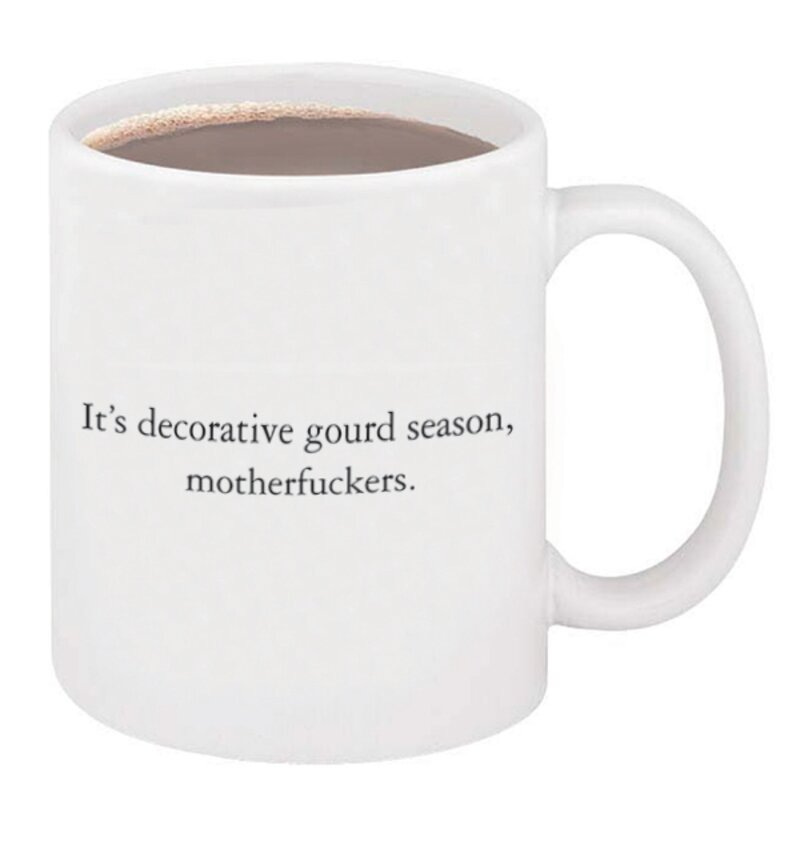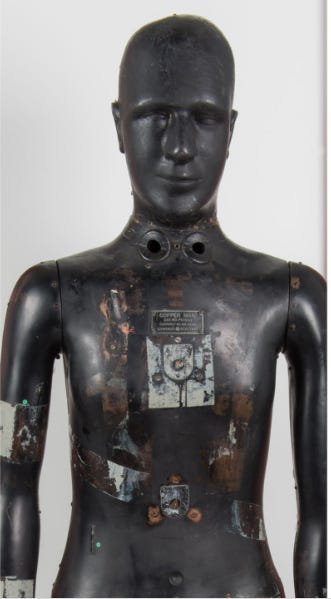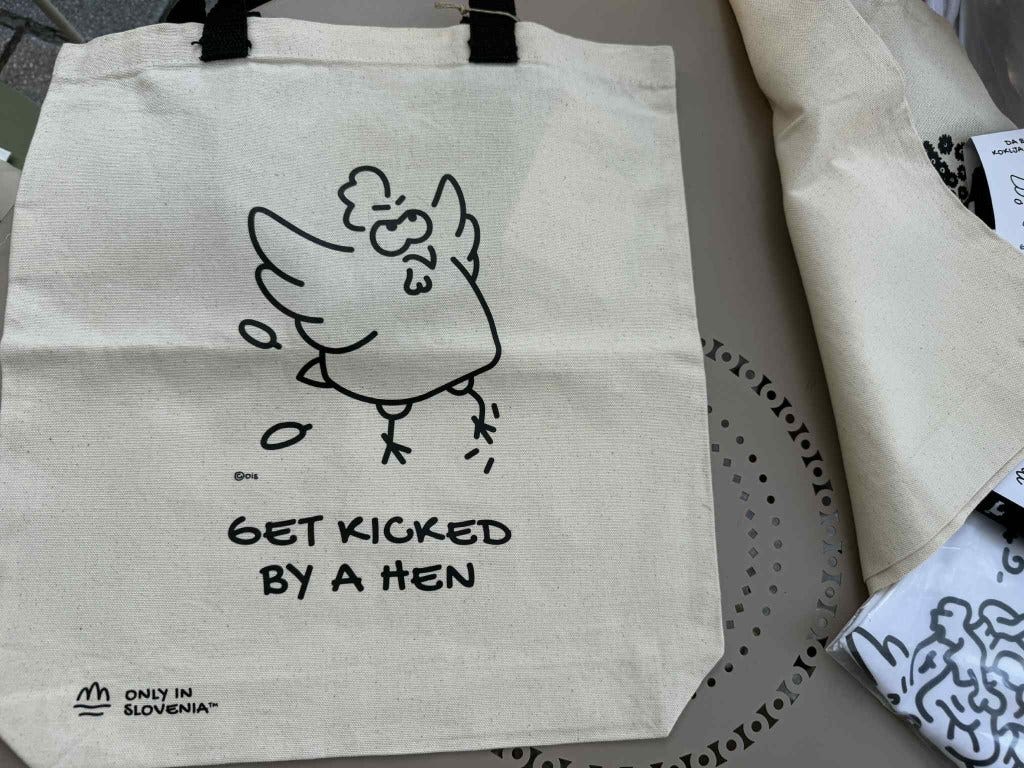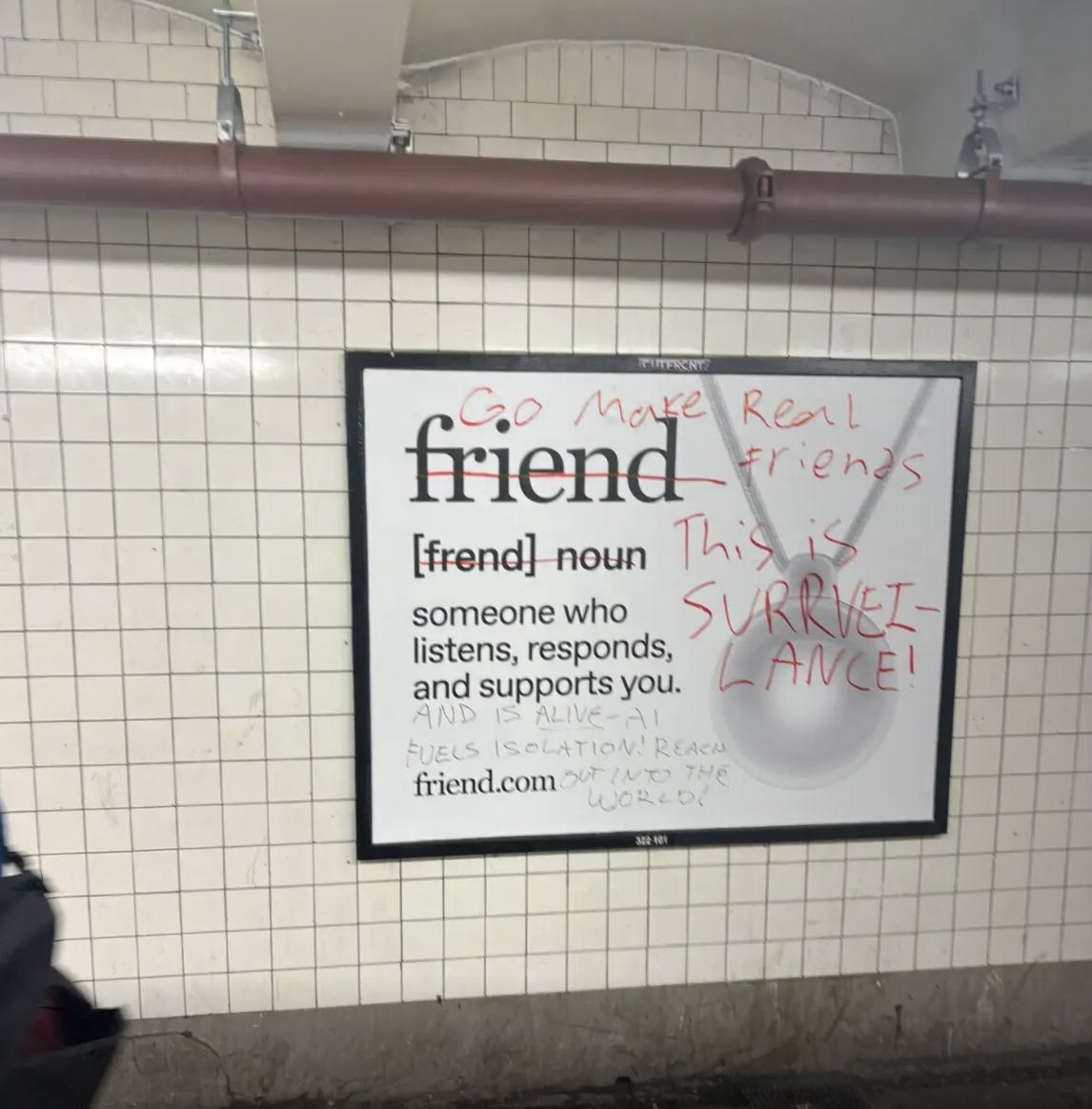October linkstack
Lots of treats, hardly any tricks.
Hello, new subscribers and followers, and greetings to you long-timers, too. Welcome back to the linkstack, a monthly roundup of news about names, words, brands, and the language of commerce — plus random interesting findings — from Substack and beyond. Here’s last month’s linkstack, where you’ll find a link to the August edition, which has a link to the July edition, which . . . well, you get the idea.
If you’re reading this as an email, tap or click on the headline for the complete (ad-free!) experience. If you like what you see, please let me know by tapping the little heart icon. (Or buy me a coffee!)
Want more Fritinancy? Follow me on Bluesky, Instagram, Pinterest, and LinkedIn. Find my complete Substack archive here. Read my old blog, also called Fritinancy, here.
New on Substack!
I’m happy to welcome two IRL friends to these environs:
- ’s new newsletter is called ; she envisions it as a sequel to her book The Thank-You Project (2019) and says that “hope is the necessary first ingredient for surviving everything we’re experiencing right now.” I’ve known and followed Nancy for many years and through many twists of her career, from blog to podcast to some sort of crazy slam event in Oakland that she won hands down. Read my 2011 blog post about how she came up with “Midlife Mixtape,” her pre-Substack alter ago.
- joins us with , a title with a great story: “In 1980, the Boston Globe ran an editorial praising a position of President Jimmy Carter’s. A skeptical staffer slapped on it a joke headline, ‘Mush from the Wimp,’ which somehow made it to print.” Ben’s first two posts provide an inkling of his range: One is about his favorite cover songs (Ben is the author of The B Side: The Death of Tin Pan Alley and the Rebirth of the Great American Song) and the other is about the pronunciation of biopic. Subscribe if you love words, music, sports, and a good time.
New from me
I was delighted to work with San Francisco architect and urban designer Alex Yuen on “Downtown Turnaround: Reinventing San Francisco’s Urban Center for the 21st Century.” I contributed branding language and editing to a report with some exciting perspectives on San Francisco’s future.
The word of the year is . . . two numbers
It’s still October, but Dictionary.com isn’t waiting to reveal its WOTY pick: 67, pronounced six-seven. If you’re at sixes and sevens over this choice, don’t worry: “We’re all still trying to figure out exactly what it means.” The remainder of Dictionary.com’s shortlist includes a few terms I’ve discussed here: broligarchy (see my #WOTY list for 2024), agentic (see high-agency, from June 2025), and clanker (see my September 1, 2025, post).
Brands in your ears
The Acquired podcast did a deep dive into one of my favorite retailers, Trader Joe’s. (Yes, there really was a Joe in its history. Also a lot of cheap wine and liquor.) If you’re unfamiliar with Acquired, here’s a post I wrote about it last May.
Speaking of Trader Joe’s,
devoted a recent post to the chain’s “ubiquitous” tote bags. And the podcast is back with a new season devoted to “gear”: Chapter 1 looks at American military uniforms; Chapter 2 zeroes in on the field jacket, whose development owes a lot to a copper mannequin named Chauncey.
Accenture at 25
People hated the Accenture name when it was introduced on January 1, 2001. (“Axe? Censure? No way.”) Time magazine called it “generic corporate nonsense.” But the name has stood the test of time1, and now Anthony Shore — the branding expert who led the naming project — tells the story of how it came to be. (Fortune; archive link for non-subscribers)
Seasonal specialties
Why do ghosts say “boo”? (Mental Floss)
Why are we seeing so many skull logos now? James I. Bowie traces the trend back to September 11, 2001: “One could speculate that the specter of death raised by these wars seeped into American culture, eventually being reflected in the popularity of skull logos such as those of dirtbike lifestyle brand Metal Mulisha and Marvel Comics’ vigilante antihero The Punisher.” (Fast Company)
Hop over to
to learn “the curious, contentious history of pumpkin spice lattes”: “Before pumpkin spice coffee became a nationwide trend, it was essentially small-town kitsch, the sort of thing your grandma might try (or dream up herself) at a café attached to a gift shoppe on Main Street.”Deep in November, it’s nice to remember that Iva Cheung is bringing back #LyricsPrompt on Bluesky. Every day of the month she’ll throw out one single-word prompt; play along by offering a song suggested by the prompt. Last year’s prompts included mind (e.g., “The Windmills of Your Mind”), try (e.g., “Try to Remember”), and forget (e.g., “Don’t You [Forget About Me]”), so you can count on those words not showing up in 2025.
And lest we forget: It’s decorative gourd season, motherfuckers. (McSweeney’s, every year since 2009.)

“Get kicked by a hen”
Speaking of swearing, a couple of designers are turning Slovenian curses — “300 furry ones,” “Get kicked by a hen” — into whimsical souvenirs. “An important filter for choosing the swear words was also how bizarre they sounded the first time you heard them. An extra point went to how strange they sounded when translated into English.” (Let’s Go Slovenia; ht Mark Prus)
Trademark, servicemark . . . cravemark?
News from pizza chain Domino’s: “Instead of a new tagline, the refresh includes what the brand calls a ‘cravemark’ — a new audio and visual expression of its name that stresses and stretches the ‘mmm’ sound in the middle of ‘Domino’s.’ A jingle is voiced by crossover country singer-songwriter Shaboozey.” (Marketing Dive) Anyone else reminded of Campbell’s “M’m! M’m! Good”?
Branding consultant Scott Milano offered his take. Click the image for the full story.
Grammarly is now Superhuman
The AI writing helper (or hindrance; your mileage may vary) is adopting the name of a company it acquired in June. “[T]he standalone writing tool Grammarly still exists, but it’s taking a backseat as Superhuman shifts its focus to offering an AI agent-powered work platform that works in every tab of your browser and knows enough about what’s going on to offer useful suggestions.” (The Verge)
Just your type
How do different generations respond to typography? (“Fonts, Feels, and Reels”: Monotype free download)
How do different typefaces respond to one another? Click the image for the full story.
Intense!
When did everything become so intentional? “That the word can be used either to slow down life into a series of luxurious, sensorial moments or to break it into individual, optimizable blocks of time is what gives ‘intentional’ its distinctly 2025 flavor.” (Marie Solis for the New York Times; gift link) On Language Log, linguist Mark Liberman provided data to support the observation that “the use of intentional in this positively-evaluated way is new, at least statistically.” I wrote about intentional back in January 2021.
Oy, AI
“Is AI going to take my job (if I’m a name developer?)” (A Hundred Monkeys)
“This is how it feels to live in the golden age of AI slop, a catchall word used to describe the spammy quality of easy-to-generate AI material. I’ve begun to think of it as the digital equivalent of an invasive species.” (Charlie Warzel for The Atlantic; gift link) (More: my November 2024 post on slop.)
How a German-born 23-year-old named Leopold Aschenbrenner started a $1.5 billion hedge fund. My interest is the fund’s name: Situational Awareness. In AI circles, writes reporter Sharon Goldman, “‘situational awareness’ usually refers to models becoming aware of their own circumstances—a safety risk. But Aschenbrenner used it to mean something else entirely: the need for governments and investors to recognize how quickly AGI might arrive, and what was at stake if the U.S. fell behind.” (Fortune; archive link for non-subscribers)
Speaking of barely legal AI founders, Avi Schiffman is the 22-year-old who launched Friend, the creepy AI pendant whose New York subway ads I wrote about last month. New Yorkers, unsurprisingly, have been defacing the ads, and Schiffman says he’s cool with it. (There’s an online gallery of defaced Friend ads.) What Schiffman is not cool with: talking to his fellow New Yorkers. (Gothamist; ht Carol K)
One more Avi Schiffman story: He raised $2.5 million for Friend and spent 75 percent of it buying the friend.com domain. #NoComment
“The positioning void”
“Is Banana Republic’s brand dying?” asks
. On her newsletter, she presents “a case study on what happens when your brand gets trapped in the mushy middle.” Especially interesting to me because back in the safari-theme era I was Banana Republic’s editorial director.R.I.P. hashtags
“To the platforms, the hashtag is vestigial—something that was useful for training neural nets, but can now be discarded. Or at least that’s what they want us to think. In truth, the hashtag is a form of control: a tool of user agency over content distribution.” (
, The Etymology Nerd)The good news: You can still use the #LyricsPrompt hashtag on Bluesky beginning November 1!
See “Why We Hate New Names (Until We Don’t)” (gift link)








This linkstack is going to take awhile. I have already subscribed to Nancy Davis Kho's "Hope As A Verb" and traveled through one of her posts to subscribe to Christopher Armitage's "From the Existentialist Republic"—which among other things offers good advice for fighting our would-be overlords.
I also looked back at the piece you did on Nancy's site renaming, back in 2011, and I realized that I have to do that, too. I also realize that (unlike SOME people) I have to discipline myself enough to hammer a couple of complicated ideas into submission. It's not that I haven't been writing, it's just that I haven't finished anything in weeks. Glad you did, though.
On Halloween, wouldn't it be more appropriate to discuss gravemarks?